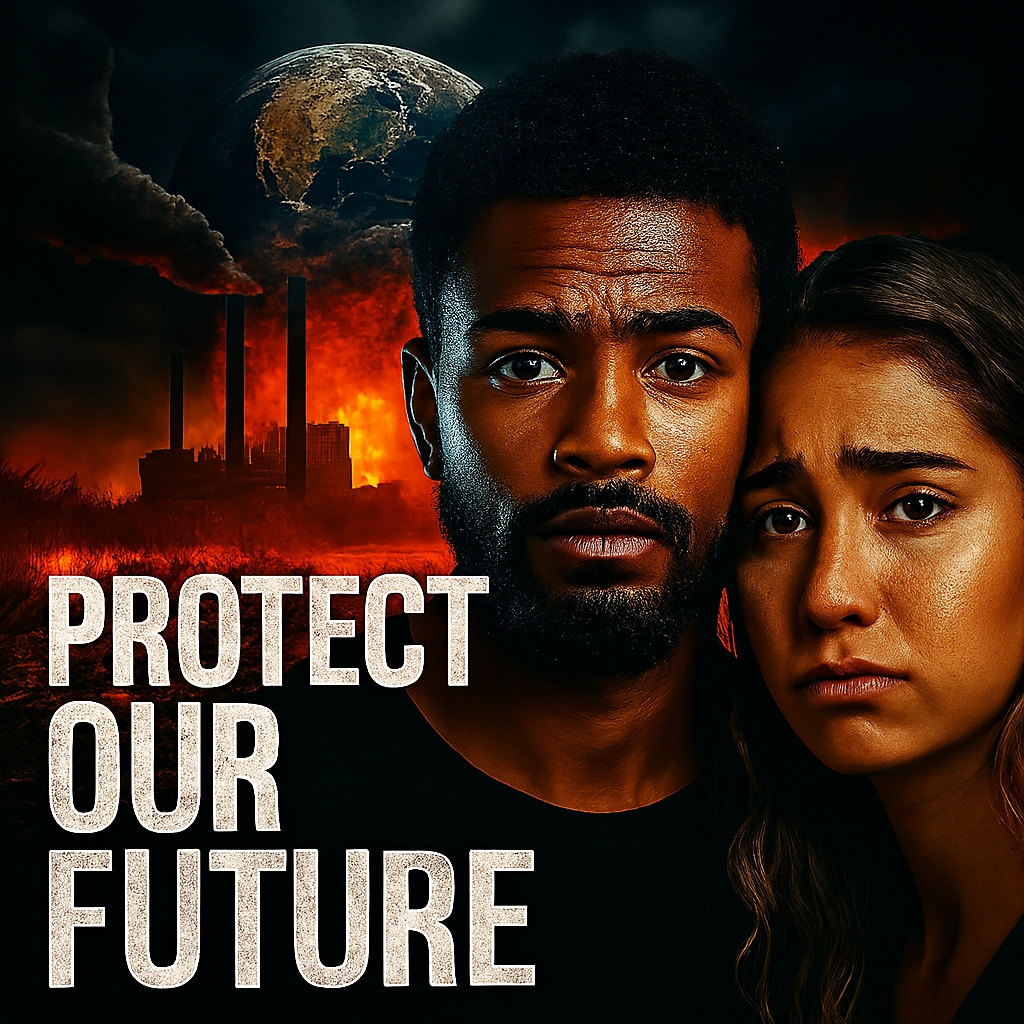Understanding Environmental Truths Of 2025
The Psychological and Systemic Roots of Environmental Truths & Climate Silence
Environmental truths and problems are real, measurable, and accelerating. Yet many people struggle to talk about them or even believe they exist. This resistance is not simply ignorance—it’s shaped by psychological defenses, cultural identity, misinformation, and systemic complexity. Climate change, biodiversity collapse, and pollution are not distant threats—they are present realities. Still, denial and disengagement persist across political, economic, and generational lines. The reasons are layered and often unconscious. People protect their emotional stability by avoiding uncomfortable truths. Cultural narratives reinforce the idea that nature is separate from human systems. Economic structures reward short-term gains over long-term sustainability. Media ecosystems amplify confusion and division. Understanding these dynamics is essential for effective communication and change.
Cognitive Dissonance and Environmental Avoidance
Cognitive dissonance arises when people hold conflicting beliefs—such as valuing nature while engaging in high-impact consumption. Environmental problems often demand lifestyle changes—triggering discomfort and resistance. People may downplay climate risks to preserve their self-image. This avoidance is not ignorance—it’s a defense mechanism. The more threatening the information, the stronger the dissonance. Environmental messaging that feels accusatory can backfire. People prefer narratives that affirm their choices—not challenge them. This leads to selective attention and biased reasoning. Dissonance is especially strong when identity is tied to consumption. Addressing it requires empathy and reframing—not confrontation. Understanding dissonance helps explain why facts alone don’t change minds. Emotional safety is often prioritized over ecological truth.

Perceived Or Skewed
Optimism Bias and Perceived Distance
Optimism bias makes people believe they are less likely to be affected by negative events. Climate change feels distant—both in time and geography. People in wealthy regions often assume they are insulated. This bias reduces urgency and personal relevance. Even when exposed to climate impacts, many still believe “it won’t happen to me.” Media coverage often focuses on faraway disasters—reinforcing distance. Optimism bias is stronger among younger individuals. It leads to underestimation of risk and overconfidence. This affects voting behavior and policy support. Personal stories and local data can counteract this bias. Making climate impacts visible and relatable is key. Optimism bias is not irrational—but it is misleading.
Political Identity and Tribal Beliefs
Environmental beliefs often align with political identity. In polarized societies, climate action is seen as partisan. People reject environmental facts if they come from “the other side.” This tribalism overrides scientific consensus. Political leaders shape public perception through rhetoric. Media ecosystems reinforce ideological divides. Environmental skepticism is often a badge of loyalty. Identity-based rejection is resistant to evidence. Cross-partisan dialogue is rare—and difficult to sustain. Tribal beliefs create echo chambers that block new information. Environmental truth becomes a casualty of political allegiance. Bridging this divide requires trust—not just data.
Misinformation and Strategic Confusion
Misinformation campaigns have targeted environmental science for decades. Fossil fuel interests have funded doubt and delay. Confusion is a strategic tool—not an accident. When people hear conflicting claims, they disengage. Misinformation exploits uncertainty and complexity. Social media amplifies falsehoods faster than corrections. Algorithms reward outrage—not accuracy. Many people lack the time or tools to verify claims. This creates a fog of doubt around climate issues. Misinformation is not just false—it’s emotionally manipulative. Countering it requires clarity, repetition, and trusted messengers. Strategic confusion is a barrier to belief—and to action.
Environmental Truths And Problems
Cultural Narratives of Human Separation
Many cultures teach that humans are separate from nature. This narrative shapes how people interpret environmental problems. If nature is “out there,” then damage feels abstract. Urbanization reinforces this separation. People may never see the ecosystems they affect. Cultural myths of dominion and control distort ecological understanding. Nature is often framed as a resource—not a partner. This mindset reduces empathy for non-human life. Environmental harm becomes normalized or invisible. Reconnecting with nature requires cultural shifts—not just education. Indigenous worldviews offer alternative models of interdependence. Separation is a story—one that can be rewritten.
Economic Incentives and Short-Term Thinking
Modern economies reward short-term gains over long-term sustainability. Environmental degradation is often profitable in the short run. Businesses may resist change due to cost or complexity. Consumers are incentivized to choose convenience over impact. Economic systems externalize environmental costs. This means damage is not reflected in prices. Short-term thinking dominates investment and policy cycles. Long-term risks are discounted or ignored. Environmental solutions may be seen as threats to growth. Greenwashing replaces genuine transformation. Aligning incentives with sustainability requires structural reform. Economics shapes belief—by shaping behavior.
Emotional Overload and Climate Fatigue
Environmental problems are emotionally overwhelming. The scale and severity can trigger paralysis. People may feel helpless or hopeless. This leads to disengagement—not denial. Constant exposure to bad news creates fatigue. Emotional overload reduces attention and motivation. Climate anxiety is rising—especially among youth. Some cope by avoiding the topic entirely. Others retreat into distraction or cynicism. Emotional resilience is essential for sustained engagement. Supportive communities can buffer climate stress. Fatigue is not weakness—it’s a signal that care is needed.

Complexity and Systems Blindness
Environmental issues are complex and interconnected. Climate change involves physics, economics, politics, and ethics. Biodiversity loss spans genetics, agriculture, and land use. Pollution affects air, water, soil, and health. This complexity overwhelms linear thinking. People struggle to grasp systems with feedback loops. Simplistic narratives often mislead or distort. Systems blindness leads to fragmented solutions. Education rarely teaches ecological systems thinking. Without it, people miss the big picture. Complexity is not a barrier—it’s a reality. Embracing it requires new tools and mindsets.
Media Framing and Narrative Gaps
Media plays a central role in shaping environmental belief. Headlines often focus on disaster—not solutions. Sensationalism overshadows nuance. Climate coverage may be episodic—not sustained. Environmental stories compete with entertainment and scandal. Journalists face pressure to simplify or dramatize. Narrative gaps leave audiences confused or disengaged. Solutions are rarely explained in depth. Local impacts may be ignored. Media framing affects emotional response and policy support. Balanced, sustained coverage is essential. Narrative clarity builds belief—and action.
Identity Defense and Personal Worldviews
Environmental facts often clash with personal worldviews. People interpret information through the lens of identity. If climate action threatens one’s lifestyle, it may be rejected. Beliefs about freedom, control, and tradition shape environmental attitudes. Some view ecological regulation as an attack on autonomy. Others see it as moral overreach. Identity defense leads to selective skepticism. People may accept science in one domain but reject it in another. Environmental belief becomes a proxy for deeper values. This makes persuasion difficult. Facts alone do not shift identity. Dialogue must respect emotional and cultural context. Worldviews are not obstacles—they are starting points.
Historical Patterns of Denial
Environmental denial is not new. Societies have ignored ecological warnings for centuries. Ancient civilizations collapsed due to resource overuse. Industrial pollution was normalized for decades. Leaded gasoline persisted despite health evidence. Tobacco denial used similar tactics as climate denial. Historical patterns show resistance to inconvenient truths. Economic interests often override public health. Denial is a recurring feature of environmental history. Recognizing these patterns helps decode current resistance. History offers lessons—not just warnings. Understanding past denial can inform future strategy.
Technological Distraction and False Solutions
Technology is often framed as the answer to environmental problems. While innovation is essential, it can also distract. People may believe future tech will solve everything. This reduces urgency and personal responsibility. Some view climate change as a technical glitch—not a systemic issue. False solutions include geoengineering and carbon offset schemes. These may delay real change. Tech optimism can mask deeper ecological truths. Not all innovation is sustainable. Distraction occurs when tech replaces ethics. Solutions must be holistic—not just mechanical. Technology is a tool—not a substitute for transformation.
Table – Comparison of Real vs False Environmental Solutions
| Solution Type | Description | Impact Level | Risk of Delay | Public Perception |
|---|---|---|---|---|
| Renewable Energy | Solar, wind, hydro | High | Low | Generally positive |
| Carbon Offsets | Pay-to-pollute schemes | Low | High | Misleadingly positive |
| Geoengineering | Climate manipulation technologies | Uncertain | Very High | Controversial |
| Reforestation | Tree planting and ecosystem repair | Medium | Low | Positive |
| Plastic Recycling | Often inefficient and symbolic | Low | Medium | Overestimated |
| Circular Economy | Systemic redesign of production | High | Low | Emerging interest |
Social Norms and Peer Influence
People often mirror the beliefs of their peers. Environmental skepticism can spread through social circles. If friends or family dismiss climate issues, individuals may follow. Social norms shape what feels acceptable. Talking about climate may feel awkward or divisive. Silence becomes the default. Peer pressure discourages ecological concern. In some communities, caring about nature is mocked. Changing norms requires visible role models. When leaders speak up, others follow. Social influence is powerful—but it can be redirected. Normalizing climate dialogue is a cultural task. Silence is contagious—but so is courage.
Table – Social Influence Factors on Environmental Belief
| Influence Type | Mechanism | Effect on Belief | Example Scenario |
|---|---|---|---|
| Peer Pressure | Conformity to group norms | High | Friends mock recycling habits |
| Role Models | Admired figures shape views | Medium | Celebrity supports climate action |
| Workplace Culture | Shared values in professional settings | Medium | Company ignores sustainability |
| Family Traditions | Inherited beliefs and practices | High | Parents deny climate science |
| Online Communities | Echo chambers and groupthink | Very High | Forums spread misinformation |
| Religious Framing | Moral interpretations of nature | Variable | Stewardship vs dominion views |
Educational Gaps and Scientific Literacy
Many people lack access to ecological education. Schools may not teach systems thinking. Climate science is complex and interdisciplinary. Without foundational knowledge, confusion grows. Scientific literacy affects belief and behavior. Misunderstanding leads to mistrust. People may confuse weather with climate. Others misinterpret data or trends. Education must go beyond facts—it must build frameworks. Visual tools and analogies help bridge gaps. Literacy is not just academic—it’s emotional. Understanding builds confidence and engagement. Education is a long-term solution to disbelief.
Table – Common Misunderstandings in Climate Science
| Misconception | Reality | Consequence |
|---|---|---|
| Climate vs Weather | Climate is long-term; weather is short-term | Confusion and dismissal |
| Global Warming Pause | Short-term variability is expected | False skepticism |
| CO₂ is Natural | Excess CO₂ from human activity is harmful | Underestimation of impact |
| Ice Age Predictions | Long-term cycles don’t negate warming | Misuse of historical data |
| Volcanoes Cause Warming | Human emissions far exceed volcanic output | Deflection of responsibility |
| Renewable Energy is Weak | Efficiency and scalability are improving | Resistance to transition |
Psychological Safety and Threat Perception
Environmental problems threaten psychological safety. People may feel attacked or blamed. This triggers defensive reactions. Threat perception reduces openness. Climate messaging must balance urgency with empathy. Fear alone does not motivate change. Safety allows for curiosity and dialogue. People need space to process difficult truths. Shame and guilt can shut down engagement. Supportive environments foster resilience. Threat perception is shaped by tone and framing. Psychological safety is essential for belief. Without it, facts are rejected.
Table – Emotional Responses to Environmental Messaging
| Message Tone | Common Reaction | Engagement Level | Risk of Rejection |
|---|---|---|---|
| Alarmist | Fear, paralysis | Low | High |
| Blaming | Guilt, defensiveness | Very Low | Very High |
| Empowering | Hope, motivation | High | Low |
| Neutral | Curiosity, reflection | Medium | Medium |
| Humorous | Relief, openness | Medium | Low |
| Personal | Empathy, connection | High | Low |
Environmental Justice and Unequal Impact
Environmental harm is not evenly distributed. Marginalized communities face the worst effects. Pollution, heat, and disaster risk are often concentrated. This creates injustice and resentment. People may feel excluded from climate conversations. Environmental justice links ecology with equity. Belief grows when people see relevance. Ignoring inequality undermines trust. Solutions must be inclusive and fair. Justice is not optional—it’s foundational. Unequal impact shapes belief and urgency. Environmental truth must reflect lived experience.
Ecological Grief and Emotional Resistance
Ecological grief is a response to environmental loss. People mourn disappearing species, landscapes, and futures. This grief is often unspoken or suppressed. Emotional resistance arises when grief feels too heavy. Some cope by denying the problem exists. Others detach emotionally to avoid pain. Grief can manifest as anger, sadness, or numbness. It affects belief and engagement. Acknowledging grief is part of healing. Emotional literacy supports ecological resilience. Suppressing grief leads to apathy. Expressing it fosters connection and action. Environmental truth includes emotional truth.
Table – Types of Ecological Grief
| Grief Type | Description | Common Triggers | Emotional Impact |
|---|---|---|---|
| Anticipatory Grief | Mourning future losses | Climate projections, extinction risk | Anxiety, dread |
| Disenfranchised Grief | Grief not socially recognized | Habitat destruction, pollution | Isolation, confusion |
| Collective Grief | Shared mourning across communities | Natural disasters, coral bleaching | Solidarity, sorrow |
| Personal Grief | Individual loss of place or species | Childhood landscapes, favorite animals | Nostalgia, sadness |
| Generational Grief | Inherited ecological trauma | Family displacement, cultural loss | Resentment, fatigue |
| Silent Grief | Unspoken mourning due to stigma | Fear of ridicule, denial culture | Emotional suppression |
Symbolic Resistance and Cultural Reframing
Symbols shape how people interpret environmental issues. Cultural icons may reinforce denial or inspire action. Resistance can be symbolic—not just verbal. Some reject climate narratives through fashion, humor, or art. Others use symbols to reclaim ecological identity. Cultural reframing shifts meaning and motivation. Symbols of nature can evoke reverence or indifference. Advertising often exploits environmental imagery. Authentic symbols foster connection and care. Resistance is not always hostile—it can be creative. Reframing requires cultural fluency and imagination. Symbols carry emotional weight. They can open or close minds.
Systemic Inertia and Institutional Delay
Institutions often move slowly on environmental issues. Bureaucracy resists rapid change. Policies may be outdated or misaligned. Institutional inertia delays action and belief. People lose trust when systems fail to respond. Delay creates confusion and cynicism. Some assume the problem isn’t real if leaders ignore it. Inertia is reinforced by legal and financial structures. Changing systems requires coordination and courage. Institutional reform builds credibility. Belief grows when systems reflect urgency. Delay is not neutral—it shapes perception. Inertia must be named and addressed.
Table – Institutional Barriers to Environmental Action
| Barrier Type | Description | Impact on Belief | Example Scenario |
|---|---|---|---|
| Legal Rigidity | Laws slow to adapt to new science | Undermines urgency | Outdated pollution standards |
| Financial Incentives | Profit-driven resistance to change | Reinforces denial | Subsidies for fossil fuels |
| Bureaucratic Delay | Complex approval processes | Creates frustration | Slow rollout of green policies |
| Political Cycles | Short-term focus in governance | Reduces long-term planning | Election-driven decisions |
| Fragmented Authority | Multiple agencies with conflicting goals | Confuses responsibility | Overlapping climate mandates |
| Lack of Transparency | Hidden data and decisions | Erodes public trust | Closed-door environmental deals |
Generational Divide and Value Conflict
Different generations view environmental issues through distinct lenses. Older adults may prioritize stability and tradition. Younger people often emphasize urgency and transformation. This divide creates tension and misunderstanding. Value conflict affects belief and dialogue. Some elders feel accused or dismissed. Youth may feel unheard or unsupported. Bridging the divide requires mutual respect. Shared stories can build empathy. Generational wisdom and innovation must align. Conflict is natural—but not inevitable. Dialogue must honor diverse experiences. Belief grows through intergenerational collaboration.
Table – Generational Perspectives on Environmental Issues
| Generation | Common Values | Environmental Attitudes | Communication Style |
|---|---|---|---|
| Silent Generation | Stability, legacy | Skeptical or cautious | Formal, reserved |
| Baby Boomers | Prosperity, independence | Mixed—some engaged, others resistant | Direct, hierarchical |
| Gen X | Pragmatism, balance | Often skeptical but open | Informal, analytical |
| Millennials | Innovation, justice | Highly engaged and vocal | Collaborative, digital |
| Gen Z | Urgency, identity | Deeply concerned and active | Visual, rapid, emotional |
| Alpha (emerging) | Fluidity, tech-native | Still forming perspectives | Immersive, intuitive |
Religious Framing and Moral Interpretation
Religion shapes how people view nature and responsibility. Some traditions emphasize stewardship and care. Others promote dominion and control. Moral framing affects environmental belief. If nature is sacred, harm feels wrong. If nature is utilitarian, harm feels justified. Religious leaders influence public attitudes. Sermons and rituals can reinforce or challenge denial. Interfaith dialogue supports ecological ethics. Belief grows when morality aligns with sustainability. Religion is not monolithic—it’s diverse and evolving. Moral interpretation is a powerful tool. It can deepen or distort environmental truth.

Local Experience and Tangible Impact
People believe what they see and feel. Local experience shapes environmental awareness. Tangible impacts build credibility. Drought, fire, and flood change minds. Personal stories resonate more than statistics. Local data makes global issues relatable. Community engagement fosters belief. When people witness change, they act. Abstract models may feel irrelevant. Tangibility bridges the gap between science and emotion. Local experience is a gateway to understanding. Environmental truth must be grounded in place.
Conclusion
Environmental disbelief is not a failure of logic—it’s a reflection of emotional, cultural, and systemic complexity. People resist ecological truths not because they lack intelligence, but because those truths threaten identity, comfort, and stability. Silence around climate and biodiversity loss is often a form of psychological protection.
Misinformation, tribal loyalty, and symbolic resistance reinforce that silence. Institutions delay, media distorts, and education gaps widen the divide. Yet belief is not static—it evolves through experience, dialogue, and emotional safety. When people feel seen and supported, they engage. When systems reflect urgency and justice, trust grows. Environmental truth must be framed not just as data—but as a shared story. One that honors grief, invites courage, and builds connection. The path forward is not persuasion—it’s restoration. Of belief, of trust, and of the ecosystems we depend on.
Join the Discussion
Environmental disbelief is not a failure of intelligence—it’s a reflection of emotional, cultural, and systemic complexity. Silence and skepticism are symptoms of deeper dynamics. This post offers 24 factual lenses to decode resistance and foster dialogue. Now it’s your turn. What barriers have you encountered? What helped you believe or speak up?
#ClimateDialogue #EcologicalTruth #EnvironmentalBelief #SystemsThinking #CulturalChange #SymbolicResistance #ClimateCommunication #EmotionalResilience #GreenIdentity #JusticeAndNature #LocalImpact #IntergenerationalWisdom














Facial Expressions And Strange Mind Powerful Understanding
[…] not joy—it’s survival. Observers may misread this as callousness or detachment. But it is often a sign of emotional overload. Laughter can be a pressure valve. It releases tension that words cannot. Understanding this helps […]